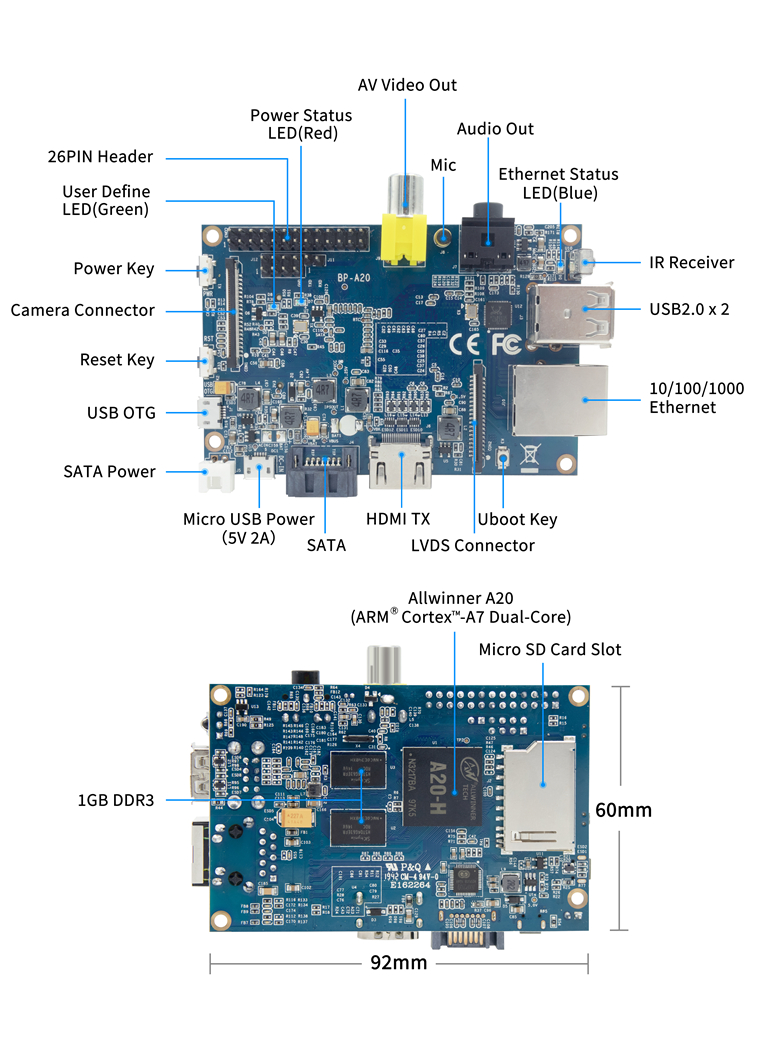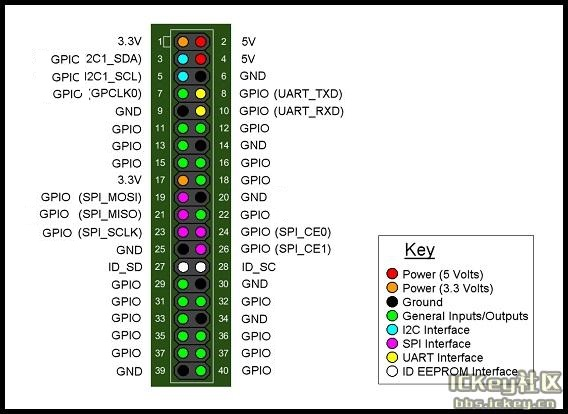Difference between revisions of "Banana Pi BPI-M1"
(→Hardware spec) |
(→Introduction) |
||
| Line 1: | Line 1: | ||
=Introduction= | =Introduction= | ||
| − | + | The Banana Pi M1 is a business card-sized and low-power single-board computer featuring a high performance AllWinner A20 dual-core SoC at 1 GHz, 1 GB of DDR3 SDRAM, Gigabit Ethernet, SATA, USB, and HDMI connections. It can run a variety of operating systems including Android, Lubuntu, Ubuntu, Debian, and Raspbian. | |
==Key Features== | ==Key Features== | ||
==Getting Start== | ==Getting Start== | ||
| − | |||
=Hardware= | =Hardware= | ||
Revision as of 23:13, 6 May 2018
Contents
Introduction
The Banana Pi M1 is a business card-sized and low-power single-board computer featuring a high performance AllWinner A20 dual-core SoC at 1 GHz, 1 GB of DDR3 SDRAM, Gigabit Ethernet, SATA, USB, and HDMI connections. It can run a variety of operating systems including Android, Lubuntu, Ubuntu, Debian, and Raspbian.
Key Features
Getting Start
Hardware
Hardware interfact
Hardware spec
| Banana Pi BPI-M1 | |
|---|---|
| CPU | A20 ARM Cortex -A7 Dual-Core |
| GPU | ARM Mali 400 MP2; Complies with OpenGL ES 2.0/1.1 |
| Memory | 1GB DDR3 |
| Network | 10/100/1000 Ethernet 8P8C (1000BASE-T) |
| Video Input | A CSI input connector allows for the connection of a designed camera module |
| Video Outputs | HDMI, CVBS, LVDS/RGB |
| Audio Outputs | 3.5mm jack and HDMI |
| Power Source | 5 volts DC via Micro USB or GPIO |
| USB 2.0 ports | 2 (direct from Allwinner A20 chip) |
| GPIO | GPIO, UART, I2C BUS, SPI BUS, WITH TWO CHIP SELECTS, CAN bus, ADC, PWM, +3.3V, +5V, GND |
| LED | Power Key & 8P8C |
| Storage | SATA 2.0, |
GPIO PIN define
Banana Pi BPI-M1 has a 40-pin GPIO header that matches that of the Model Raspberry Pi 3. Following is the Banana Pi GPIO Pinout:

